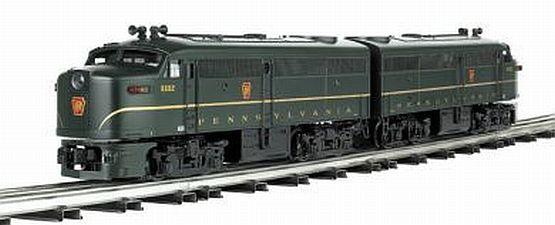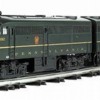Modifying a Williams FA A-B-A Diesel Combination
I am in the process of modifying a Williams Pennsylvania Railroad FA diesel set to create an all A-unit power A-B-A combination.
To start I will be converting the dummy A unit to dual power. The A units will be wired to run back to back.
In addition I will be also rewiring the motors as series connected motors which will reduce the top end speed. Since these are Pennsylvania road engines (Brunswick Green paint schemes) they are intended for heavy slow freight use so they do not need high end speed.
I will also convert the headlights to directional LEDs.
Note: I have an extra powered FA unit which will provide the necessary additional power chassis.






